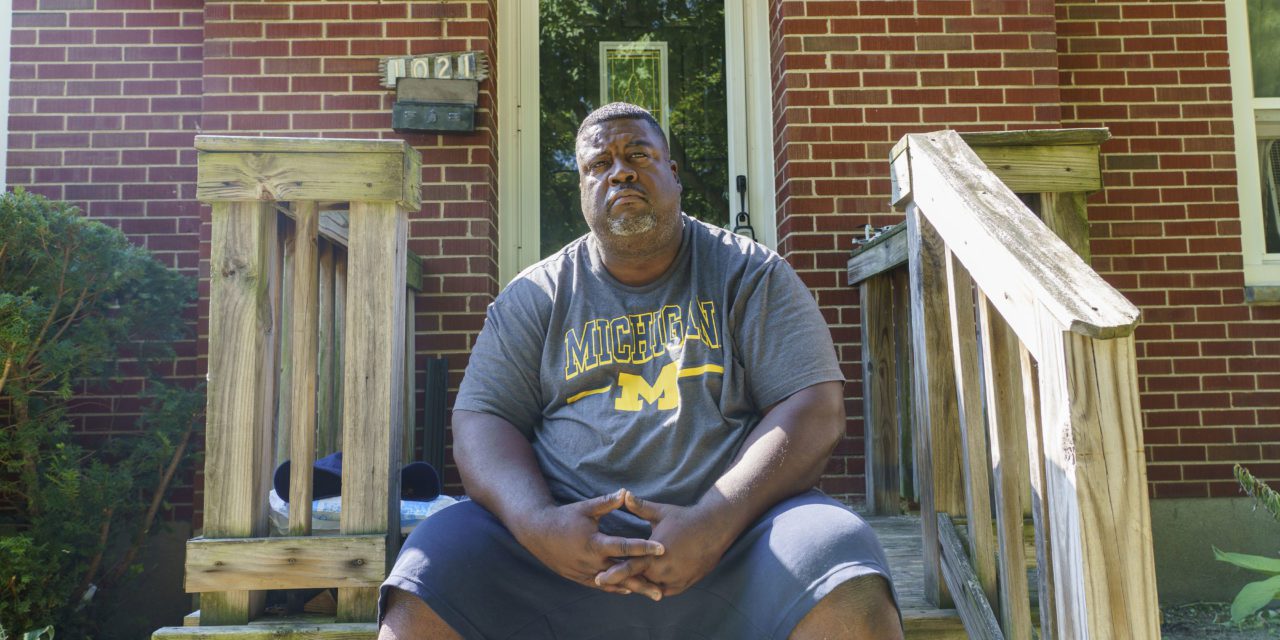David Malcolm noticed his neighborhood changing.
He was standing at the bus stop on Brooks St., carrying a duffel bag, when he saw a man eyeing him as he walked past. A few minutes later, a police car approached. The officers in the car were friends of his and let him know they got a phone call reporting a suspicious black man that fit his description.
Another time, his younger cousin was accused of stealing a woman’s lawn mower during the Water Hill Music Festival. The mower was his family’s, and he was taking it from one property they owned to another.
Then there are all the times Malcolm, forty-nine, has seen social media posts about a suspicious person walking in the neighborhood. Almost every time, he can fit the description to someone he has known for years.
“It’s painful when I’m reading stuff on Nextdoor.com about these suspicious people, and just by their descriptions, I know who they are,” Malcolm says. “I know the people that they are, and I know what families they come from, and I know their history.”
This is not the West Side where Malcolm grew up in the 1970s. So named because it was across Main St. from the older black neighborhood north of downtown, it had been a working-class neighborhood with a large African American population. But by the 1990s, it was undergoing gentrification.
He noticed an increased police presence and a change in the attitudes of new residents. And as a Realtor, he saw wealthier people buy houses from residents who were struggling financially, update them, and sell them for almost double what they’d paid. Depending on location and the type of renovations, a home in the neighborhood can now be sold for anywhere from $250,000 to $1 million.
As the black residents died or moved away, most were replaced by white millennials or retirees. And after the impromptu music festival held from 2011-2018, they adopted a new name for the neighborhood: Water Hill.
—
Though he could probably sell and buy a larger home somewhere else, Malcolm has lived there all his life. His family has been here for 100 years, and relatives own several other properties in the neighborhood. His parents attended Jones School on N. Division (now Community High), and he went to Mack School on Miller.
His upbringing was characterized by a sense of community–he says he wouldn’t have been able to cross Main without his neighbor, Miss Baxter, notifying his mother. He and his friends would play foosball for twelve or thirteen hours a day at the Ann Arbor Community Center on Main, where his grandmother worked in the kitchen. The center’s door was always open, and growing up, he participated in many of its programs, like day care and premarriage counseling.
Neighbors looked out for one another: if he wasn’t there to shovel his sidewalks, someone else would do it for him. “Having a community of people that look out for one another and care for one another is everything to me,” Malcolm says. “It helps you stay grounded, it helps you grow–everything. I have great memories from growing up in a community like that.”
—
Although his block is still composed mostly of long-term residents, the rest of the neighborhood is now very different. The community center sold its building in 2017. Membership in the Elks Lodge in the neighborhood–Ann Arbor’s chapter of the black service club–has dwindled from 300 members in the 1960s to about thirty now. These days, he feels like a stranger in his own neighborhood.
About six years ago, Malcolm hosted a meeting at Mack School (now Ann Arbor Open) to talk about the racial profiling and microaggressions long-term residents were experiencing. But he says he still gets stares from new residents and feels as though he cannot go for a walk without being watched.
“You just don’t know people anymore,” Malcolm says.
Neighbors who moved away can no longer afford the houses their families once owned. If they come back to check on the neighborhood, they usually stop at his house. Or he sees them at the annual Old Neighborhood Picnic at Hudson Mills Metropark–one of the efforts by long-term residents to keep its memory alive.
Malcolm does not believe gentrification itself is a bad thing. But he says it can make long-term residents “very uncomfortable.” A late neighbor, a black woman raised in Mississippi under segregation, had to deal with white buyers constantly knocking on her door asking if she would sell her home.
“I don’t mind that people are moving into the neighborhood, but I don’t like being a target of suspicion,” Malcolm says.
Still, he feels a duty to stay in the neighborhood where he grew up–to have his children walk in their grandparents’ footprints and continue their familial ties to the area.
“My family legacy keeps me here,” Malcolm says. “I’m at a point in my life where I have to understand that I am actually my great-grandparents’ legacy, not that house. Even though my granddad built it when he came back from the war, it’s a house at the end of the day. Would they want to see me there uncomfortable or not wanting to be there? Or would they want me to make good use of it and be happy?”
For Malcolm, the neighborhood will always be the West Side, not Water Hill.
—
A version of this article previously appeared in Community High School’s the Communicator.


